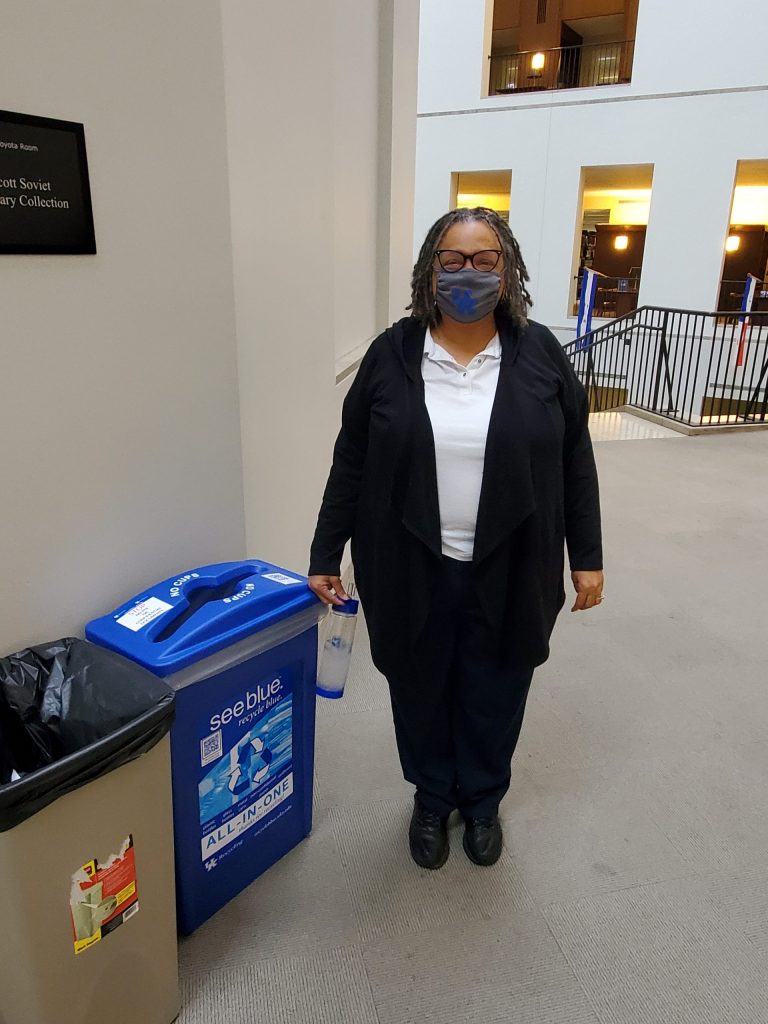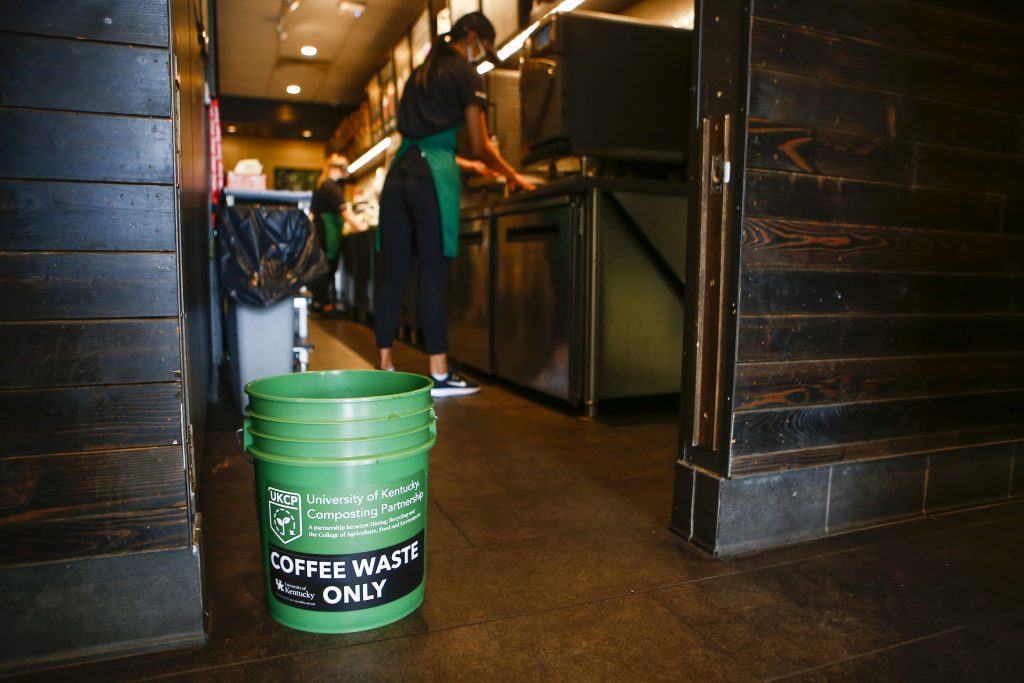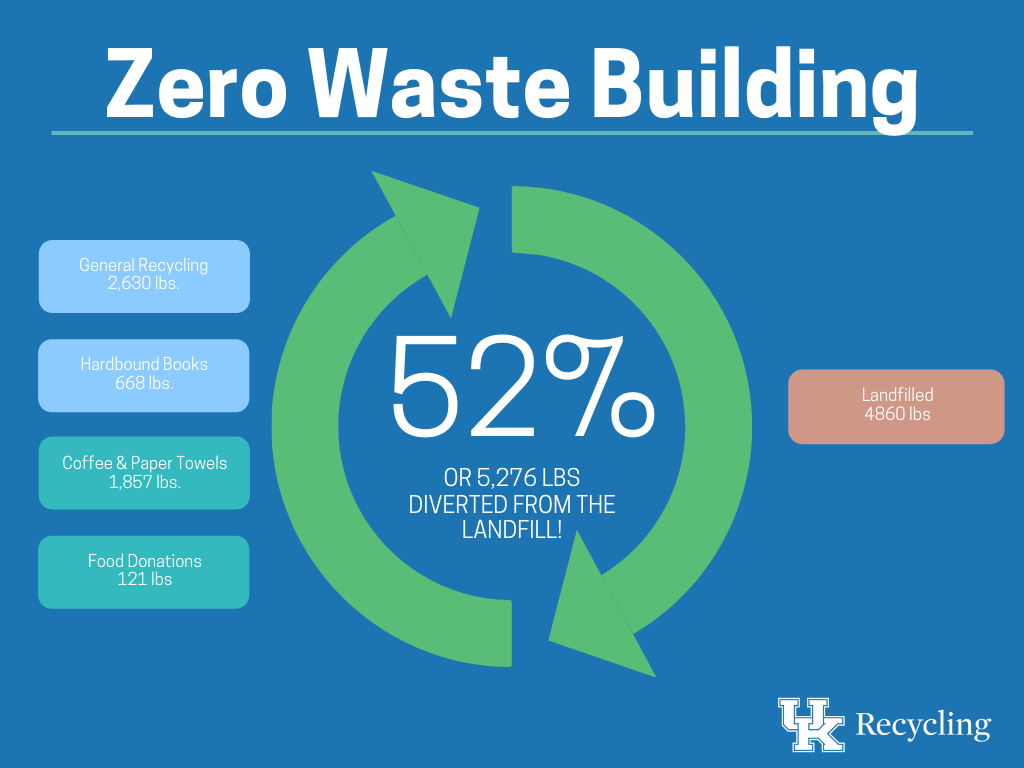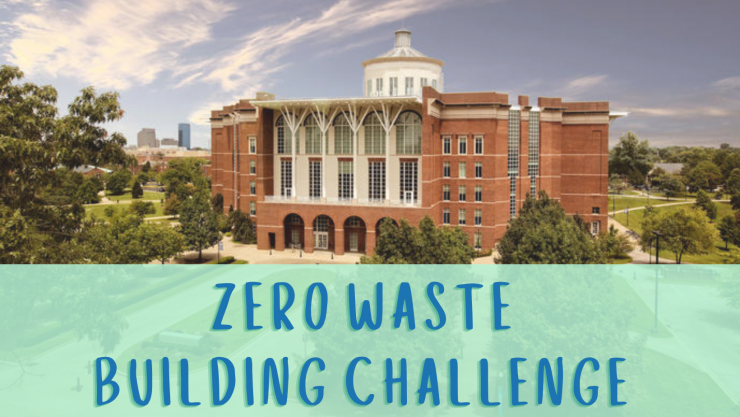How much waste does one building create? Is it possible that a couple of changes can create real change? Those were all questions I set out to figure out when I enrolled W.T. Young into the Zero Waste Building Challenge as apart of Campus Race 2 Zero Waste competition (formerly Recyclemania). Let’s be clear, it is impossible to go ZERO waste. Zero Waste is the ambition goal to divert (recycle, compost, reuse) 90% of waste from landfills.
W.T. Young is one of the most iconic buildings on the UK’s campus and probably holds the record for the most students that have accidentally spent the night there studying. With five floors, a basement, coffee shop, offices and tons of study areas, this building has immense capacity to create tons of waste – but also amazing opportunities to lead the campus toward change.
Step 1 – make sure there is recycling in the building. Recycling is one of the easiest ways to avoid sending material to the landfill. Thanks to the UK Custodial Supervisor, Roberta Young, each floor, and area of the building was evaluated. Recycling containers were placed next to each landfill container and extra landfill containers were removed.
Step 1.5 – W.T. Young has a lot of books. Some of those books are loved more than others and become unusable. UK Recycling partners with Woodford County Recycling Center to recycle all hardbound books since they cannot go into the general recycling here at UK.


Step 2 – with recycling readily available in the building, it was time to look at other waste generated – enter coffee waste. You all drink a LOT of coffee. Thanks to a partnership with UK Dining, UK Sustainability, UK College of Agriculture, Food and Environment (CAFE), we can compost food waste, primarily from the two dining facilities on campus. To help W.T. Young move toward zero waste, coffee waste was (and still is) collected and composted.
Step 2.5 – I think we can all agree that wasted food is a problem. Thankfully, UK Dining has created partnerships with campus organizations (Campus Kitchens) and community partners (God’s Pantry) to donate edible food. Food donation is a form of reuse and landfill diversion, so all of those donations moved W.T. Young closer to our zero waste goal.
Step 3 – now that recycling and coffee waste are collected in the building, time to get creative. There are 32 bathrooms in W.T. Young and all of them have at least 2 paper towel dispensers. All the brown paper towels that are used in W.T. Young are compostable, so why not capture them!
So how did we do? I am happy to report that W.T. Young was able to achieve a 52% diversion rate for a 4-week period. We were not able to achieve zero waste (90% diversion rate), but we were able to collect some impressive data and information:


We still have work to do, but we are excited about all the possibilities this competition showed us. We could not have done any of this without partnerships; partnerships with our truly amazing custodial team and partnerships with UK Dining.
Take a minute and evaluate your own waste. Are there items you could reduce or minimize? What is your personal diversion rate?
Check our UK Recycling waste audit worksheet to figure out how much material you are diverting from the landfill!



























